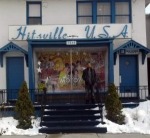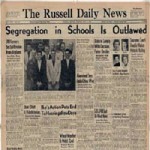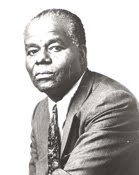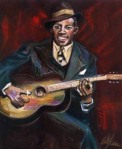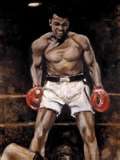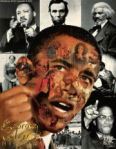 It was a warm day in August during the year of our Lord 1619, when people from Africa were first dragged onto the American shores; African Americans have been chastised, criticized, punished, beaten, robbed, and murdered.
It was a warm day in August during the year of our Lord 1619, when people from Africa were first dragged onto the American shores; African Americans have been chastised, criticized, punished, beaten, robbed, and murdered.On this day a dark cloud of shame was cast upon America to the benefit of the culprits who enjoyed great wealth and prosperity as a result of our never ending allegiance and patriotism – in spite of our condition. Even today when we have ascended to the White House there are those who castigate much vial abuse upon this uniquely qualified man of African heritage.
We are a unique people, a forgiving people, a steadfast people, and a brave people unlike any known to the world. It was our labor that built this country and is responsible for the great wealth America enjoys to this very today. When you look upon America’s enormous wealth and the power derived from its tremendous control of the resources, think about the sacrifices our families made to make all of this possible. We have looked out for this country for hundreds of years and still doing today, is simply amazing.
Upon our backs, laden with the stripes of punishment for what they believed was for discipline and in spite of our loyalty, diligence and tenacity we loved America. Even when America refused to allow us to even walk in the shadows, we followed, believing that someday we would come to accept and treat like men and women. Our strength in the face of adversity is vastly understated.
Our history is one of unbelievable struggle. We’ve been brave on the battlefield, despite being classified as three-fifths of a man, which was outstanding and beyond the call of duty. While in the states we lived under an Apartheid like system. We have raised America’s children, attended to its sick, and prepared their meals while those forefathers were occupied with the trappings of the good life. Even during the times when they found pleasure in our women and enjoyment in seeing our men lynched, maimed and burned. We continued to watch over America’s soul.
We labored in the hot sun for 12 hours to assist in realizing the dream of wealth, good fortune, and making America great. Others have controlled at least 90 percent of all the resources and wealth of this nation. We were there when it all began, and you are still here today, protecting the system from those Black people who have the temerity to speak out against America’s past transgressions.
It was us who warned about Denmark-Vessey, told you about Gabriel Prosser's plans, called your attention to Nat Turner, Malcolm, and Martin. It was us sounded the alarm when old John Brown came calling on Harper's Ferry and there are still some sounding warnings today. Black Nationalism has died and as result our community brings 95 percent of what it earns to other businesses and keeps little for themselves.
We purchase things like Hilfigers, Karans, Nikes, and all of the other brands that make people feel as if the system is giving back something for their patronage. After all, in the past, the brands and scares placed upon us were worn quite painfully, but those of today can be proudly worn because they gives suppose a false sense of self-esteem. Our community’s super-rich; athletes, entertainers, intellectuals, and business persons, both legal and illegal, exchange most of their money for cars, jewelry, homes, and clothing. The less fortunate among us spend all they have at neighborhood stores, enabling them to open even more stores; this results from our not doing business with each other.
Some say we, as a people, were very successful at it after slavery ended and even as recently as 1960, but you know what happened when you began to build your own communities and do business with one another – you’re destroyed and put out of business. In today's business environment, we do not support each other and just keep doing business with the larger community or in fact any other community.
We dance, sing, fight, get high, go to prison, back bite, envy and distrust and hate one another. Oh, less not forget we pray a lot. We resisted the messages of trouble-making Blacks like Washington, Delaney, Garvey, Bethune, Tubman and Truth, for fighting and dying on the battlefield for us all. Yet, most have forgotten the names and hardly ever considered their sacrifice due to a lack of reciprocity and equity.
This includes our acquiescence to political agendas, abdicating our own economic self-sufficiency, and working so diligently for the economic well-being of other people. Even though the 13th, 14th and 15th Amendments were written and many died for the rights described therein, we did not resist when they changed Black rights to civil rights and allowed virtually every other group to take advantage of them as well. This goes beyond the imagination, irrespective of the many promises that have been made and broken. A lass, don’t worry, when you die you will find a place where there is a mansion waiting for you and streets paved with gold.
Finally, we went beyond the pale and allowed our children to be turned over to the American educational system. With what is being taught to them, it's likely they will continue in a mode similar to the one we have followed for the past 45 years. When Mr. Lynch walked the banks of the James River in 1712 and said he would make African’s slave for 300 years, little did he realize the truth in his prediction. Just one more years and his promise will come to fruition. But with two generations of children going through this education system, we can look forward to at least another 50 years of despair.
When you continue to do what you’ve always done; you will get what you always got. I say free your mind and your ass will follow and that’s my Thought Provoking Perspective.
"Just a Season"
Visit: http://johntwills.com/
Legacy – A New Season is coming!













